yanxu's blog
With the development of the times and the advancement of technology, customized production has become an important trend in today's manufacturing industry. In the textile industry, customized braiding machines, as a key production equipment, are gradually attracting people's attention. This article will conduct an in-depth discussion on the market demand, advantages, application fields and customized production processes of customized braiding machines.
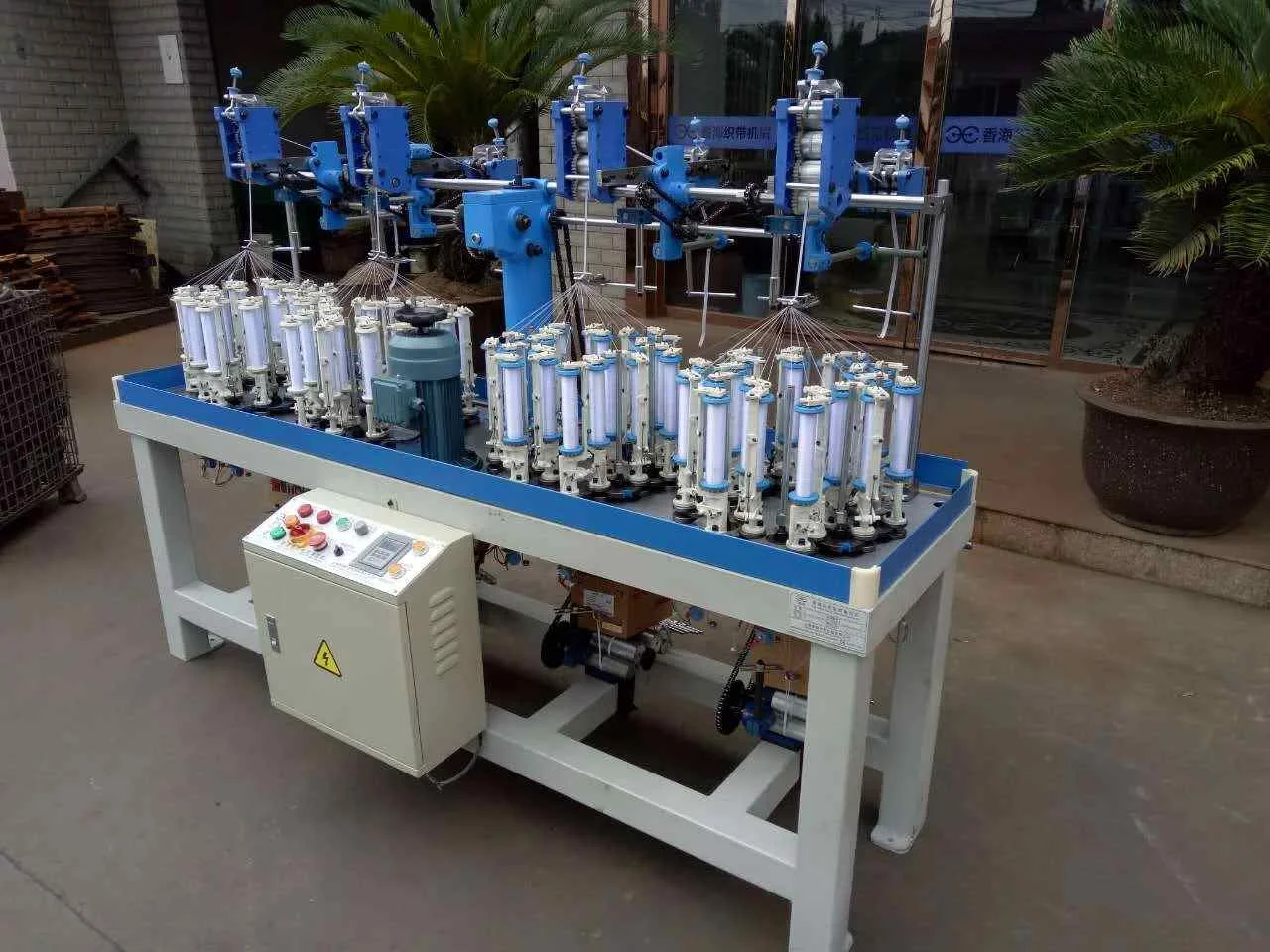
As consumers'demand for personalized customized products continues to increase, the traditional mass production model can no longer meet market demand. As an important tool for customized production, customized braiding machines have been enthusiastically sought after by the market. Whether it is clothing, home textiles or industrial materials, customized braiding machines are needed to achieve personalized customized production, so the market demand for customized braiding machines is huge.
2. Technical features and advantages of customized braiding machineshigh productivity
Customized braiding machines use advanced technology and equipment to produce quickly and improve production efficiency. At the same time, it can also be customized according to customer needs, avoiding waste in the production process and improving production efficiency.
Low production cost
Customized braiding machines can be customized according to customer needs, avoiding waste during the production process and reducing production costs. At the same time, the use of advanced technology and equipment can improve production efficiency and further reduce production costs.
High production quality
Customized braiding machines use advanced technology and equipment to ensure production quality. At the same time, it can be customized according to customer needs and produce products that meet customer needs, further improving production quality.
High production flexibility
Customized braiding machines can be customized according to customer needs and produce products that meet customer needs, with strong production flexibility. At the same time, the use of advanced technology and equipment enables rapid production, further improving production flexibility.
3. Application fields of customized braiding machinesCustomized braiding machines have a wide range of applications in the textile industry, including clothing, home textiles, industrial materials and other fields. In the field of clothing, personalized customized fabric production can be achieved to meet consumers'needs for personalized clothing; in the field of home textiles, various customized household items can be produced, such as curtains, carpets, etc.; in the field of industrial materials, It can produce various special-purpose industrial materials, such as composite materials, engineering textiles, etc.
4. Customized production process of customized braiding machinesThe customized production process of customized braiding machines includes customer demand analysis, customized design, customized production and quality control. First of all, customer demand analysis is the first step in production, and it is necessary to fully understand the individual needs of customers; secondly, customized design is a key link in production, and equipment design and adjustment need to be based on customer needs; thirdly, customized production needs to be based on design Production operations are required to ensure that the product meets customer needs; finally, quality control is the last hurdle, and strict quality testing of the product is required to ensure that the product quality meets the standards.
To sum up, customized braiding machines have broad market prospects and development space. With the continuous advancement of science and technology and the increasing market demand, it will play an increasingly important role in the textile industry and promote the development of the textile industry in the direction of personalization, intelligence, and efficiency.
https://www.yeeyuan.net/What-are-the-Advantages-of-Custom-Braiding-Machines.html
Solar panel is an environmentally friendly, renewable energy device that converts solar energy into electricity, providing clean energy for our lives and work. When installing and maintaining JA solar panels, there are some important things to note to ensure proper operation and longevity.
Preparation before installation:Before installing JA solar panels, a series of preparations are required. First, the installation site needs to be evaluated to ensure that the solar panels will receive sufficient sunlight. Secondly, on-site measurements and designs are required to determine the layout and installation of solar panels. At the same time, related engineering construction preparations are also required, including building brackets, wiring, etc.
Install:1. Bracket installation: Before installing the solar panel, you need to install the bracket first. The installation of the bracket needs to consider the load-bearing capacity of the ground, wind load and other factors to ensure the stability and safety of the bracket.
2. Panel installation: After installing the bracket, the solar panel can be installed. During installation, attention needs to be paid to the orientation and angle of the panels to maximize sunlight exposure.
3. Electrical connection: After installing the panel, electrical connections need to be made to connect the panel to the inverter, power grid, and other equipment to ensure the normal operation of the solar power generation system.
The installation of solar panels is not only a technical project but also an environmentally friendly behavior. Solar panels can convert solar energy into electrical energy, reducing dependence on traditional energy sources and reducing environmental impact. Compared with traditional energy sources, the use of solar panels can reduce a large amount of carbon dioxide emissions, help improve air quality, and protect the atmospheric environment.
In addition, the installation of solar panels can also have a positive impact on residents' lives. By installing solar panels, residents can generate their own electricity and reduce energy bills. Especially in some remote areas or places without power supply, solar panels can provide stable power support for local residents and improve living conditions.
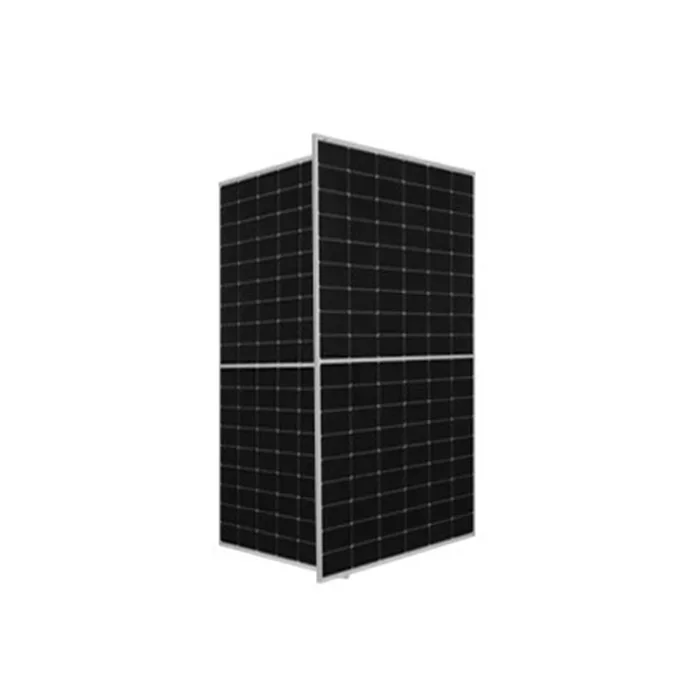
1. Cleaning: Regularly clean the dust and dirt on the surface of solar panels to keep the panels working efficiently. When cleaning, be sure to use a soft cloth and clean water, and avoid using chemicals and hard objects to scratch the surface.
2. Inspection: Regularly check whether the connection between the solar panel and the bracket is loose, damaged, or corroded, and repair and replace it in time.
3. Protection: Install lightning protection devices and anti-bird facilities to protect solar panels from lightning strikes and bird damage.
4. Monitoring: Install monitoring equipment to monitor the operation of the solar power generation system in real-time, and discover and solve problems in a timely manner.
The installation and maintenance of JA solar panels are key to ensuring the long-term and efficient operation of your solar power generation system. Through reasonable installation and scientific maintenance, the performance of solar panels can be maximized, their service life can be extended, and they can contribute to clean energy power generation.
https://www.janewenergy.com/JA-solar-panel-installation-and-maintenance-guide.html
With the continuous development of industrial automation, as the power source of various mechanical equipment, the stability and reliability of motor performance are particularly important. As an important tool for evaluating motor performance, motor tester selection is crucial to ensure the stability and safety of motor operation. This article will introduce you to the selection guide for motor testers from different angles, helping you choose a motor tester that suits your needs among many products.
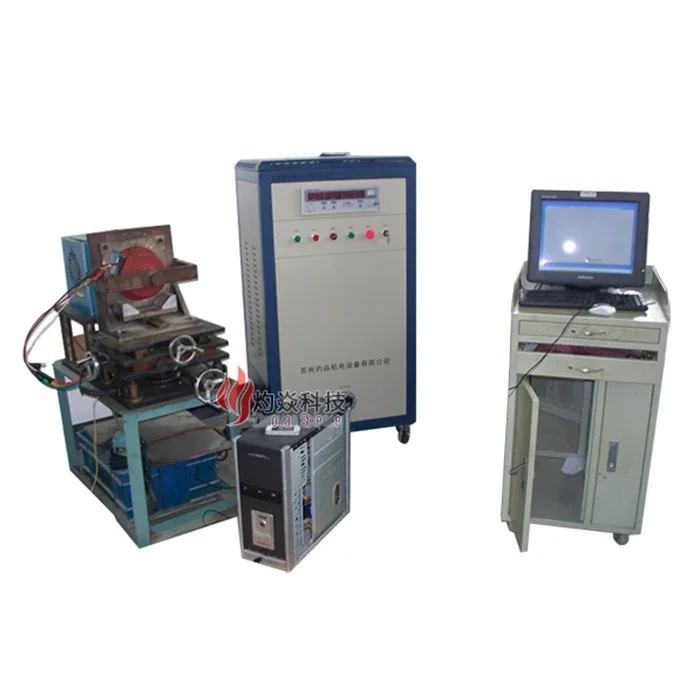
First, one of the factors to consider when selecting is the type of test object. Different types of motors may require different types of test equipment. For example, DC motors, AC motors, synchronous motors, and asynchronous motors have different working principles and performance characteristics, so corresponding test instruments need to be selected accordingly. When selecting, it is necessary to clarify the type and specifications of the test object in order to select the appropriate test instrument.
Secondly, the measurement range and accuracy of the test instrument are also important considerations in selection. Motors of different specifications may have different parameters such as rated power, speed, current, etc. Therefore, the measurement range of the test instrument needs to cover the range of motor parameters to be tested. At the same time, the measurement accuracy of the test instrument also needs to meet the requirements of the actual test to ensure the accuracy and reliability of the test results.
In addition, the functions and characteristics of the test instrument are also important factors to consider when selecting. For example, some advanced motor testers may have functions such as data recording, analysis, and report output, which can help users gain a more comprehensive understanding of the performance and working status of the motor. In addition, some test instruments may have features such as automated testing and remote control, which can improve testing efficiency and convenience. Therefore, the functions and characteristics of the test instrument need to be considered based on actual needs when selecting.
In addition, the reliability and stability of the test instrument are also important factors to consider when selecting. Motor testing usually requires long-term operation and stable data collection, so the stability and reliability of the test instrument are crucial to the accuracy and credibility of the test results. When selecting, you need to choose a testing instrument with good quality and stability to ensure the stability and reliability of the testing process.
Finally, cost is also one of the important factors to consider when selecting. The prices of motor testers with different specifications and functions may vary greatly, so you need to choose a product with a higher price ratio based on your actual budget and needs. When selecting, you need to comprehensively consider factors such as the performance, functionality, quality, and price of the test instrument to choose the product that best suits your needs.
To sum up, the selection of a motor tester needs to consider many factors such as the type of test object, measurement range and accuracy, functions and characteristics, reliability and stability, and cost. When selecting, you need to consider these factors based on actual needs to choose the motor tester that best suits your needs. We hope that the selection guide in this article can help you better choose a motor tester to ensure the stability and reliability of motor operation.
https://www.zymotortester.com/Motor-tester-selection-guide.html
The cooling effect of an RV air conditioner is an important component of RV comfort. When traveling in an RV, especially during the hot summer months, a good cooling system can provide a comfortable environment for passengers, making them feel happy and relaxed during the trip. This article will discuss the cooling effect of RV air conditioners, including its principles, influencing factors, etc.

First, let us understand the cooling principles of RV air conditioners. RV air conditioners usually use a refrigerant circulation system to achieve cooling effects. This system includes components such as a compressor, condenser, expansion valve, and evaporator. During operation, the refrigerant circulates through these components, absorbing and releasing heat through the process of compression and expansion, thereby achieving a cooling effect. This refrigeration principle is currently the most common working method and the basis of the refrigeration effect.
Secondly, there are many factors that affect the cooling effect of RV air conditioners. The first is the size and tightness of the RV space. The larger the RV space and the better the sealing, the greater the cooling capacity required by the air conditioner.
Secondly, the cooling effect of the RV air conditioner is also related to the sealing of the RV. If the RV is not tightly sealed, hot air from the outside will continue to enter the interior of the RV, causing the temperature inside the RV to rise and affecting the cooling effect. Therefore, when using it, you need to ensure that the sealing of the RV is good. This can be judged by checking whether the door and window seals are intact.
In addition, the cooling effect of the RV air conditioner is also related to the brand and model. There are many brands and models of RV air conditioners on the market, and different brands and models have different cooling effects.
Finally, the cooling effect of the RV air conditioner is also related to the use environment. In hot weather, the RV air conditioner needs to consume more energy for cooling. Therefore, if the ambient temperature is too high, the cooling effect of the RV air conditioner will also be affected. At this time, you can reduce the temperature inside the RV and improve the cooling effect of the RV air conditioner by increasing the sunshade measures of the RV.
Cooling efficiency is a very important consideration when choosing an RV air conditioner. Generally speaking, consumers can understand the cooling effect of the air conditioner by looking at its cooling capacity indicator. Cooling capacity is usually expressed in BTU/hour (British Thermal Units per hour) or W (Watts). The greater the cooling capacity, the better the cooling effect of the air conditioner. In addition, some advanced air conditioning products also have intelligent control functions, which can automatically adjust the cooling capacity according to actual needs, improving comfort and saving energy.
In addition to choosing the right RV air conditioner, proper maintenance is critical to cooling effectiveness. Regularly cleaning the air conditioner filter and condenser can maintain the cooling effect of the air conditioner. In addition, regular inspection of the refrigerant filling amount and system sealing is also the key to maintaining the cooling effect.
In general, the cooling effect of the RV air conditioner is directly related to the comfort of passengers during the journey. Understanding the principles and influencing factors of refrigeration is crucial to improving the cooling effect of RV air conditioners. By choosing the right air conditioning product and performing correct maintenance, you can ensure that your RV can provide a cool and comfortable environment in the hot summer, adding to a pleasant travel experience.
https://www.kmevehicleac.com/How-to-improve-the-cooling-effect-of-RV-air-conditioner.html
Drilling fluid additives are an indispensable and important component in drilling operations. They can improve the performance of drilling fluids, increase drilling efficiency, and ensure the smooth progress of downhole operations. However, proper usage and precautions are also crucial, and we’ll dive into these below. In order to provide some useful guidance and reference for relevant practitioners.
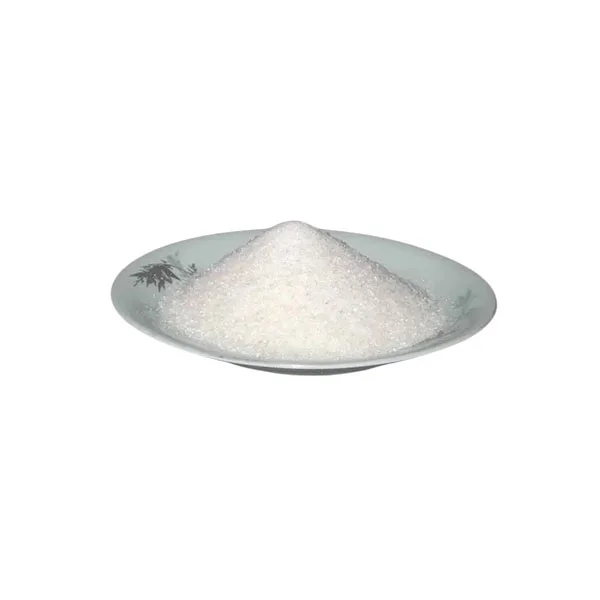
First of all, the selection of drilling fluid additives should fully take into account factors such as formation conditions, drilling purpose, and well depth. Different formation conditions and drilling purposes require the use of different types of additives. For example, inhibitors are needed to control formation permeability in high-permeability formations, while high-temperature and high-pressure resistant additives are required under high-temperature and high-pressure conditions. Therefore, when selecting additives, it is necessary to fully understand the formation conditions and drilling environment to ensure that the selected additives can meet actual needs.
Secondly, the amount and time of additives are also issues that require special attention. Too much or too little additives will adversely affect the performance of drilling fluids. Therefore, when using additives, it is necessary to reasonably determine the dosage of additives based on the formation conditions and drilling environment, and make timely adjustments based on the actual changes in drilling fluid performance. In addition, the timing of adding additives also needs to be carefully controlled. Additives must be put into the drilling fluid at the appropriate time based on the actual conditions and needs of the drilling operation to ensure that they can exert the best effect.
When using additives, you need to pay attention to mixing the additives evenly. Improper mixing will prevent the additives from functioning fully and may even have a negative impact on the performance of the drilling fluid. Therefore, after adding the additives, sufficient stirring and mixing should be carried out to ensure that the additives can be evenly dispersed in the drilling fluid.
In addition, the storage and use of additives are also issues that require special attention. Some additives have certain requirements for environmental conditions such as temperature and humidity. Therefore, the requirements need to be strictly followed during storage and use to avoid affecting the performance and effect of the additives.
In the process of using additives, it is necessary to pay close attention to the performance changes of the drilling fluid and make timely monitoring and adjustments. Once abnormal changes in drilling fluid performance are discovered, the reasons need to be analyzed promptly and corresponding measures are taken to make adjustments to ensure the smooth progress of drilling operations.
In short, the application skills and precautions of drilling fluid additives are crucial to ensure the smooth progress of drilling operations and improve drilling efficiency. Only by fully understanding the formation conditions and drilling environment, rationally selecting additives, and using them in strict accordance with the requirements can we ensure that the additives can exert their best effect and improve the efficiency and quality of drilling operations. It is hoped that this article can provide some useful guidance and reference for relevant practitioners so that they can be more comfortable in the use of drilling fluid additives.
https://www.scdbwhb.com/Precise-Application-Tips-and-Precautions-for-Drilling-Fluid-Additives.html
Hydraulic tie rod cylinder sealing technology plays a vital role in construction machinery and industrial equipment. The quality of sealing technology directly affects the performance and life of the hydraulic system. This article will delve into the relevant knowledge of hydraulic tie rod cylinder sealing technology, including sealing principles, common sealing materials and the development trend of sealing technology.
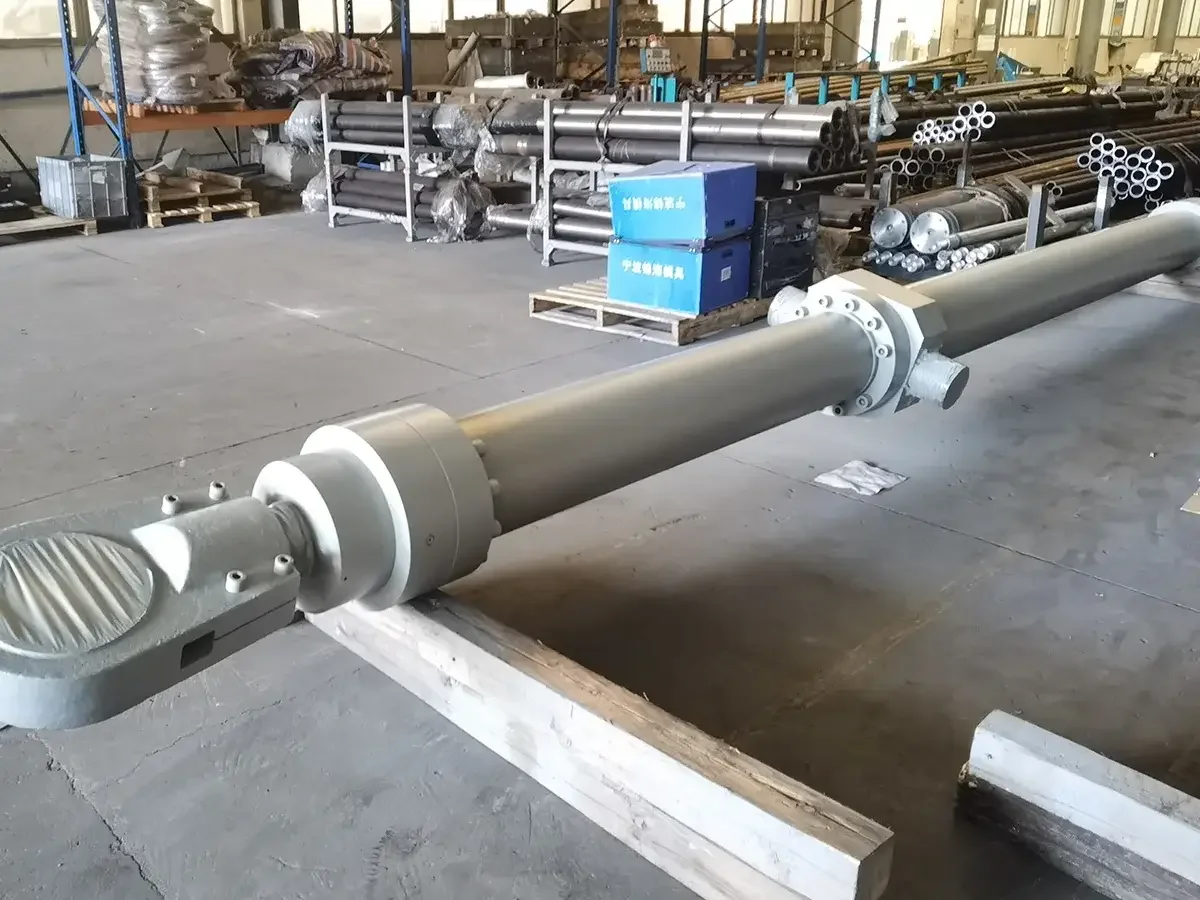
First, let us understand the principles of hydraulic tie rod cylinder sealing technology. Hydraulic tie rod cylinders mainly use seals to prevent hydraulic oil leakage and ensure the sealing of the system. Common seals include O-rings, sealing rings, piston rod seals, etc. These seals need to withstand harsh conditions such as high pressure, high temperature, and high speed when working, so the reliability and durability of sealing technology are crucial.
2. Hydraulic tie rod cylinder sealing materialSecondly, the selection of sealing materials is crucial to sealing technology. Common sealing materials include rubber, polyurethane, fluoro rubber, etc. Different sealing materials have different wear resistance, high-temperature resistance, and corrosion resistance. When selecting sealing materials, you need to consider the temperature, pressure, and medium of the working environment, as well as the working speed and stroke of the seal. Reasonable selection of sealing materials can effectively improve the service life and sealing performance of seals.
3. Hydraulic tie rod cylinder sealing structureThe sealing structure of the hydraulic tie rod cylinder mainly includes a one-way sealing structure, a two-way sealing structure, and a rotating sealing structure. Different sealing structures have different characteristics and application ranges. The appropriate sealing structure should be selected according to the specific use environment and requirements.
One-way sealing structure refers to a sealing structure that can only prevent hydraulic oil from leaking from the cylinder to the external environment. Common one-way sealing structures include O-rings, V-rings, U-rings, etc.
The two-way sealing structure refers to a sealing structure that can prevent hydraulic oil from leaking and prevent external impurities from entering the cylinder. Common bidirectional sealing structures include bidirectional O-rings, bidirectional V-rings, bidirectional U-rings, etc.
Rotary sealing structure refers to the sealing structure used for rotating rods. Common rotating seal structures include oil seals, mechanical seals, etc.
With the continuous advancement of science and technology, hydraulic tie rod cylinder sealing technology is also constantly developing. In recent years, some new sealing technologies have been gradually used in hydraulic systems, such as hydraulic diaphragm sealing technology, hydrostatic sealing technology, etc. These new technologies not only improve sealing performance but also reduce the friction resistance of seals, improving the efficiency and stability of the system.
In actual hydraulic system applications, in addition to the sealing technology itself, correct installation and maintenance also play a vital role in the service life and performance of the seals. When installing seals, it is necessary to ensure that the sealing surface is clean and smooth to avoid damaging the seal surface. Regular maintenance work can also extend the service life of seals and reduce the occurrence of leaks and failures.
In short, hydraulic tie rod cylinder sealing technology is a vital part of the hydraulic system. Through an in-depth understanding of sealing principles, sealing materials, and sealing technology, suitable sealing technology can be better selected and applied to improve the performance and reliability of hydraulic systems. With the continuous advancement of science and technology, I believe there will be more innovations and breakthroughs in hydraulic tie rod cylinder sealing technology in the future, providing better support for the development of construction machinery and industrial equipment.
https://www.toringcylinder.com/Hydraulic-tie-rod-cylinder-sealing-technology.html
1.1 Extrusion feed pellet mill
The extrusion feed pellet mill is a device that uses extrusion force to compress raw materials into pellets. It usually includes components such as a mold, a pressure roller, and a host. By adjusting the gap size between the mold and the pressure roller, feed pellets of different specifications can be produced. This type of feed pellet machine is suitable for processing various livestock and poultry feeds, aquatic feeds, etc.
1.2 Flat feed pellet mill
The flat plate feed pellet mill is a common feed processing equipment. Its working principle is to use a pressure roller to roll back and forth on a flat plate to squeeze the raw materials into pellets. This type of feed pellet machine has a simple structure and is easy to operate. It is suitable for use in small and medium-sized farms.
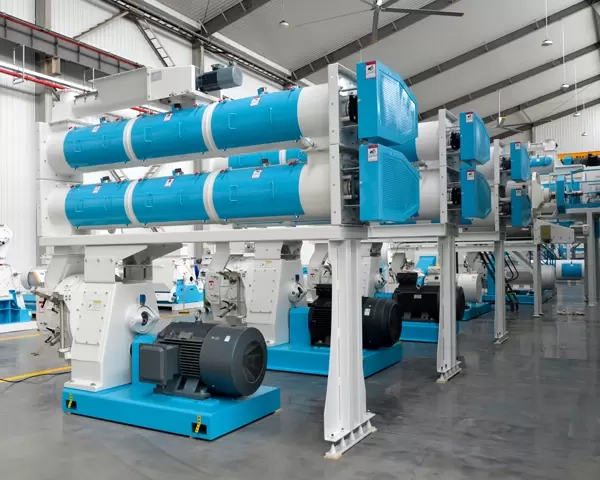
2.1 Pressure granulator
Pressure granulator is a device that uses mechanical pressure to squeeze raw materials into particles. Its granulation principle is to control the size and density of particles by adjusting the gap and rotation speed of the pressure roller. This type of feed pellet mill is suitable for processing high-density and high-strength feed pellets.
2.2 Friction granulator
Friction granulator is a device that uses raw materials to form particles under the friction and extrusion force of high-speed rotation. Its granulation principle is to control the size and shape of particles by adjusting the gap between the rotor and the screen. This type of feed pellet mill is suitable for processing feeds with high particle shape requirements.
3. Classification by scope of application3.1 Household feed pellet mill
Household feed pellet mills are usually small in size and suitable for use in family farms or individual farmers. They usually have a simple structure and operation mode and are suitable for processing small batches of feed pellets.
3.2 Industrial feed pellet mill
Industrial feed pellet mills usually have large production capacity and degree of automation, and are suitable for use in large and medium-sized farms or feed processing plants. They usually have multiple specifications of molds and auxiliary equipment to meet the production needs of different specifications and types of feed.
4. Classification by power sources4.1 Electric feed pellet mill
Electric feed pellet mill is a device that uses an electric motor as a power source and is usually suitable for use in areas with sufficient power supply. They usually have stable power output and high production efficiency.
4.2 Diesel feed pellet mill
Diesel feed pellet mill is a device that uses a diesel engine as a power source and is suitable for use in areas with unstable or no power supply. They are usually highly adaptable and mobile, suitable for use in the wild or remote areas.
4.3 Manual feed pellet mill
A manual feed pellet mill is a feed processing equipment that uses human power as a power source. It has the advantages of simple structure and low price, and is suitable for use in small farms.
5. Classification according to structure5.1 Flat die feed pellet mill
The flat die feed pellet mill is a feed processing equipment that presses feed raw materials into pellets through a flat die. It has the advantages of simple structure and low price, and is suitable for use in small farms.
5.2 Ring die feed pellet mill
Ring die feed pellet mill is a feed processing equipment that presses feed raw materials into pellets through a ring die. It has the advantages of good particle quality and high production efficiency, and is suitable for use in large farms.
5.3 Roller feed pellet mill
The roller feed pellet mill is a feed processing equipment that presses feed raw materials into pellets through roller friction. It has the advantages of good pellet quality and low cost, and is suitable for processing a variety of feed raw materials.
Feed pellet mill is a very important feed processing equipment. It can process feed raw materials into granular feed to improve the eating efficiency of livestock and poultry. Different types of feed pellet machines are suitable for different occasions, and farmers should choose according to their actual situation when choosing. I hope this article can provide useful information to readers, thank you for reading.
https://www.fast-js.com/industry-news/Reveal-the-classification-of-feed-pellet-mills-and-learn-about-different-types-of-feed-pellet-mills.html
Multi-turn valve interlock is made of 304/316/316L stainless steel. These materials have excellent corrosion resistance and high-temperature resistance and are suitable for valve operation in various harsh environments. This interlocking device is suitable for gate valves, globe valves, and valves with gearboxes. The valve cannot be operated while in the locked state, ensuring that the valve cannot be operated while it is in the locked state, thereby ensuring workplace safety. With dual key interlocking, two keys are used for each valve lock, and the valve cannot operate unless both keys are inserted into the lock. With a single key interlock, the valve can be operated when a key is available.
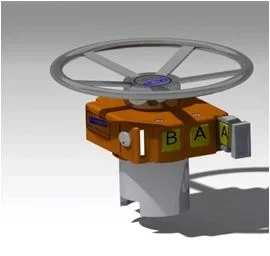
1. The design and manufacturing of multi-turn valve interlock are reliable and complete, with minimal repair and maintenance.
2. The key exchange rate is zero.
3. Operating temperature: -57℃~260℃, suitable for various harsh industrial environments.
4. Each key has a unique key code and cannot be inserted in the wrong position.
5. The steel stamp code on the key corresponds to the code on the valve keyhole.
6. Each lock is marked with a unique code, and the number information of each item is stored in the database. Therefore, when the user's key is lost or the lock fails, the user name, device location and other information can be quickly found through the lock code and Key code.
7. Welding or any other modifications to the valve are not allowed. The design of the interlock should be customized to the valve so that the interlock can be installed with a few minor operations.
In addition to the characteristics mentioned above, Multi-turn valve interlock should also have some other important characteristics. For example, it should have explosion-proof, anti-corrosion and other functions to adapt to different industrial environments. It should also have anti-misoperation functions to ensure the safe operation of the equipment.
In general, Multi-turn valve interlock provides users with a safe and efficient valve control solution with its reliable design, wide applicability and convenient management features. It can not only protect the safety of equipment and personnel, but also improve the efficiency and accuracy of equipment management, so it has been widely used and recognized in various industrial fields.
https://www.nudango.com/What-are-the-characteristics-of-multi-turn-valve-interlock.html
A pressure sensor is a device used to measure the pressure of a liquid or gas, and it plays an important role in a variety of industrial and scientific applications. The working environment and requirements of a pressure sensor have an important impact on its performance and stability. This article will explore the working environment and requirements of pressure sensors, and how to correctly select and use them under different environmental conditions.
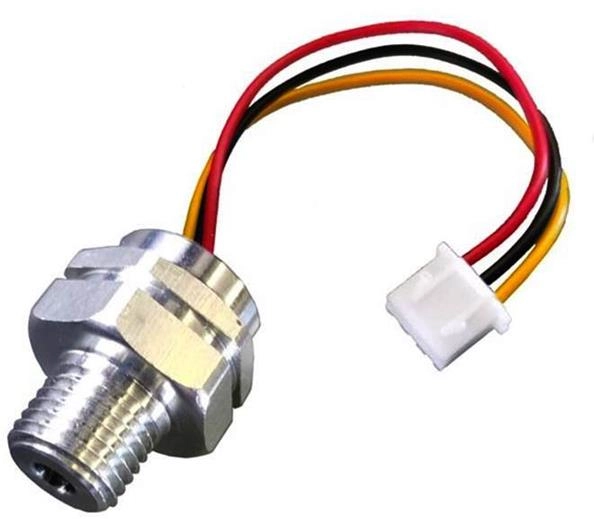
First of all, the working environment of the pressure sensor includes factors such as temperature, humidity, medium, vibration, and electromagnetic interference. In different working environments, the performance of pressure sensors will vary. Temperature is one of the important factors affecting performance. Generally speaking, the operating temperature range refers to the temperature range in which it can work normally. Exceeding this range may cause the sensor performance to decrease or even be damaged. Therefore, when using a pressure sensor in a high or low-temperature environment, you need to select a sensor with a corresponding operating temperature range or take insulation or cooling measures.
In addition, humidity is also one of the important factors affecting the performance of pressure sensors. In a high-humidity environment, the electrical components of the sensor are easily affected by moisture, thus affecting its normal operation. Therefore, when using it in a humid environment, you need to choose a sensor with waterproof and moisture-proof properties or take moisture-proof measures to ensure the stability and reliability of the sensor.
In addition, the medium will also have an impact on the working environment of the pressure sensor. Different media have different requirements for sensor materials and structures. For example, when using a sensor in corrosive media, you need to choose corrosion-resistant materials and take anti-corrosion measures to ensure the long-term stable operation of the sensor.
Vibration and shock are also one of the important factors affecting the performance of pressure sensors. When using sensors in vibration and shock environments, you need to choose sensors with anti-vibration and shock resistance or take vibration reduction and shock reduction measures to ensure the stability and reliability of the sensor.
In addition, electromagnetic interference will also have an impact on the working environment of the pressure sensor. When using a sensor in an environment with strong electromagnetic interference, you need to choose a sensor with anti-interference performance, or take shielding and filtering measures to ensure the stability and reliability of the sensor.
In addition to the working environment, the requirements of the pressure sensor are also important factors affecting its performance and stability. First of all, there are strict requirements for the accuracy and stability of pressure sensors. In some high-precision applications, the accuracy and stability of the sensor are very high, so it is necessary to select a sensor with high accuracy and stability or to take calibration and debugging measures to ensure the measurement accuracy and stability of the sensor.
In addition, there are also certain requirements for the response speed of the pressure sensor. In some applications that require fast response, there are high requirements for the response speed of the sensor. Therefore, it is necessary to select a sensor with a fast response speed to ensure that the sensor can respond and perform measurements in a timely manner.
In addition, there are strict requirements for the reliability and durability of pressure sensors. In some applications that work stably for a long time, there are high requirements for the reliability and durability of the sensor. Therefore, it is necessary to choose a sensor with high reliability and durability to ensure that the sensor can work stably for a long time.
To sum up, the working environment and requirements of the pressure sensor have an important impact on its performance and stability. In different working environments, it is necessary to select sensors with corresponding performance and characteristics and take corresponding measures to ensure that the sensors can work stably and reliably. At the same time, there are also strict requirements for the sensor's accuracy, response speed, reliability, and durability. It is necessary to select the appropriate sensor according to the specific application needs and take corresponding measures to ensure that the sensor can meet the application's needs and perform its best. performance.
https://www.dejintech.com/Working-environment-and-requirements-of-pressure-sensors.html
An optical module is a device used for optical communications and optical networks. It can convert electrical signals into optical signals and then transmit them through optical fibers. The power of the optical module is a very important parameter, which directly affects the performance and usage of the optical module. In this article, we will explore optical module power and its related issues.
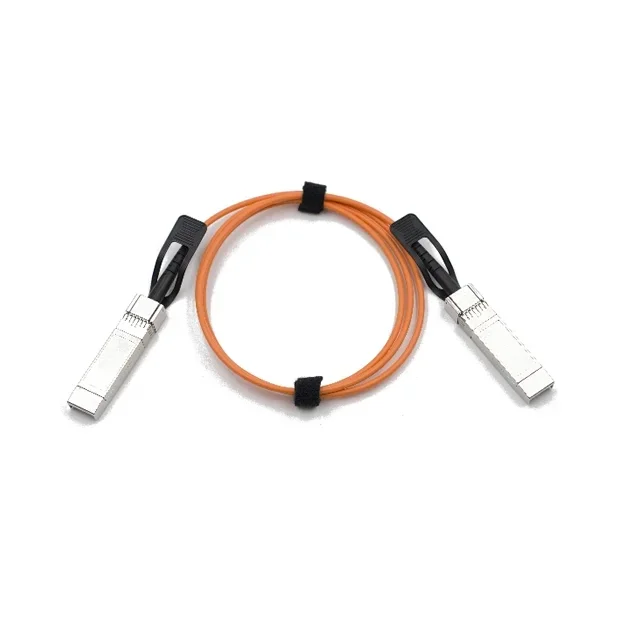
The power of the optical module refers to the electrical power consumed by the optical module when it is working. The power of an optical module is usually described by two parameters: transmit power and receive power. Transmit power refers to the electrical power consumed when sending optical signals while receiving power refers to the electrical power consumed when receiving optical signals.
2. Measurement of optical module powerThe measurement of optical module power is usually done using an optical power meter. An optical power meter is an instrument specifically used to measure optical power. It can measure the transmit power and receive power of an optical module. When measuring power, you need to pay attention to the following points:
The optical power meter should be calibrated before measurement to ensure its accuracy.
An appropriate wavelength range should be selected during measurement to ensure the accuracy of the measurement results.
When measuring, the probe of the optical power meter should be aligned with the optical port of the optical module to ensure the accuracy of the measurement results.
3. Factors affecting optical module powerThe power of the optical module is affected by many factors, including:
Operating temperature: The operating temperature of the optical module has a great impact on its power. Normally, the power of an optical module decreases as the temperature increases.
Working voltage: The working voltage of the optical module will also affect its power. Normally, the power of an optical module increases as the operating voltage increases.
Light source: The light source of the optical module also affects its power. Different light sources have different power characteristics, which will affect the power of the optical module.
Size of the optical module: The size of the optical module also affects its power. Typically, larger optical modules have higher power.
Manufacturing process: The manufacturing process of the optical module will also affect its power. Different manufacturing processes will affect the power of optical modules.

Optical module power is widely used in optical communications, data centers, optical fiber sensing and other fields. In optical communication systems, high-stability optical module power can ensure the transmission quality of optical signals in optical fibers, thereby achieving long-distance, high-speed data transmission. In data centers, efficient and stable optical module power is crucial for large-scale data transmission and processing. In addition, optical module power also plays an important role in the field of optical fiber sensing to achieve accurate detection and measurement of optical signals.
5. Optimization of optical module powerOptimize light source stabilityThe stability of the light source directly affects the stability of the optical module power. By using high-quality, high-stability light source devices, the output power stability of the optical module can be effectively improved, thereby improving the transmission performance of the optical communication system.
Precise control of drive currentThe accuracy of the driving current has a direct impact on the modulation depth and output power of the optical module power. Optimizing the control algorithm and circuit design of the driving current can achieve precise control of the power of the optical module and improve the stability and transmission quality of the system.
Application of temperature compensation technologyTemperature has a great impact on the power of optical modules, especially in environments with a wide operating temperature range. The use of temperature compensation technology can effectively suppress the impact of temperature on the power of optical modules and improve the stability of the system in different temperature environments.
Optimize optical module structural designBy optimizing the structural design of the optical module, such as optical design, electrical design, and thermal design, the energy consumption of the optical module can be reduced, the efficiency and power output of the optical module can be improved, and the performance of the entire optical communication system can be optimized.
Real-time monitoring and feedback adjustmentIntroducing real-time monitoring and feedback adjustment technology, the optical module power can be monitored in real time and automatically adjusted based on the monitoring results to ensure the stability and accuracy of the optical module power.
Optical module power is a key parameter in optical communication systems, and its stability and accuracy are crucial to the performance of the entire system. With the continuous development of optical communication technology, the power requirements for optical modules are also constantly increasing. Therefore, we have reason to believe that in the near future, optical module power will usher in more innovations and breakthroughs, injecting new vitality into the development of optical communication technology.
I hope this article can help you better understand the importance of optical module power in the field of optical communications, and look forward to witnessing the bright future of optical communications technology with you.
https://www.fineconnco.com/Optical-module-power-a-key-parameter-in-the-field-of-optical-communications.html
